Fashion brands are turning into private members clubs to vie for VIP spenders
Those unaffected by the cost-of-living crisis are driving a double-digit luxury boom in Australia — but they are demanding more for their money than ever. Here’s how they’re spending it.

Australians cannot get enough of the finer things in life, with our appetite for designer fashion, high-end handbags, fine jewellery and watches fuelling a spending spree.
Local prestige retail is estimated to have made $5.3 billion in sales in the past year – almost doubling what it was worth in less than 10 years – and its contribution to the GDP of this country is growing faster than the overall economy.
Figures from global market research firm IBISWorld state there are now more than 460 luxury businesses in Australia, up 49 per cent since 2013-2014, and it employs almost 6000 people across the country as key brands such as Cartier, Hermès, Fendi and Christian Dior expand their retail footprint in major cities and others such as Valentino open flagships on our shores for the first time. Sales are expected to continue to grow even further – despite significant economic headwinds – to $6.1 billion in 2027-2028.

But Australia is not alone in its growing desire for personal luxury goods. The global industry is expected to be worth €353 billion in annual sales and it’s this that is responsible for Bernard Arnault being the second richest man in the world. The Frenchman is the chief executive of huge Paris-based conglomerate LVMH, which now comprises more than 75 businesses from Louis Vuitton to Tiffany & Co., Moët & Chandon to Christian Dior. According to the Bloomberg Billionaires Index, Arnault is worth $US197 billion (at time of publication), after being bumped off the No.1 spot by electric car tsar turned Twitter owner Elon Musk, but leaving tech titans Jeff Bezos and Bill Gates in his wake.
This booming luxury market has also seen fashion and jewellery retailers evolving into quasi private members clubs to remain competitive: offering exclusive services, hospitality and experiences to entice high-net-worth individuals unaffected by the cost-of-living crisis and who want more than just to purchase goods at a store.
This includes sitting front row at fashion shows and lavish dinners celebrating high jewellery collections, exclusive parties at the top of the newly renovated Tiffany & Co. Landmark boutique in New York, Gucci’s latest store in Los Angeles, open by VIP appointment only and not to the wider public, and even Louis Vuitton unveiling an airport lounge in Qatar.
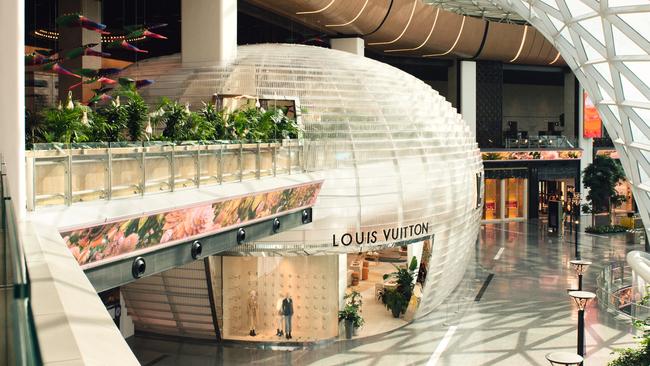
Australia’s recent rapid growth in luxury – according to IBISWorld it equated to a 12 per cent leap in revenue in just one year – was kick-started by the country being cut off from the world for two years. This meant those who would normally do their designer shopping overseas instead connected with local boutiques to spend, established relationships with key staff, did significant purchasing online, and provided the sales made pre-pandemic by tourists from China.
“A lot of wealthy Australians remained put during the pandemic and splurged domestically as opposed to going to Paris or New York,” explains Kayla Wheeler, IBISWorld senior industry analyst and author of the recent report on luxury. “So retailers boosted sales locally that would have otherwise been made on overseas trips and indulged in personal purchases. There was also revenge spending after the pandemic ended and the fact that the main market for luxury brands is high-net-worth individuals less affected by the financial stressors that come with the cost-of-living pressures currently faced by low to middle income earners.”
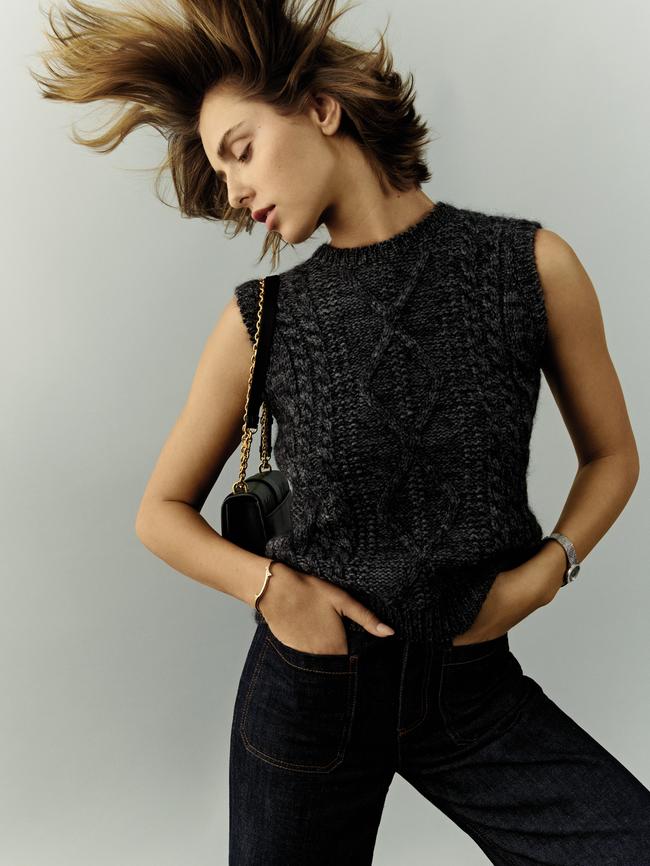
This has been reflected in the results of the key luxury brands in Australia. Hermès, which opened its multi-million-dollar two-level flagship on Sydney’s King Street in 2020, recorded a huge increase, along with other brands such as Chanel. Jewellery and watch houses such as Cartier and Van Cleef & Arpels saw their market grow significantly in Australia.
“We have seen an extraordinary acceleration of our local clients,” Alban du Mesnil, the managing director of Cartier Australia and New Zealand, told WISH at the opening of the brand’s new Sydney store late last year. “We have also spent a lot of time reflecting on how to better adapt our experience, our boutique concept and our communication strategy to local Australians and it’s now bearing fruit, because the relationships we built during those two years are still continuing to this day.”

Arnault’s LVMH does not release results for each business nor the country in which they operate but recorded €21 billion of revenue worldwide in the first quarter of 2023, up 17 per cent on the same time last year. Richemont, owner of jewellery houses Cartier and Van Cleef & Arpels, recorded an all-time high of €20 billion in sales in the 12 months to March 31, 2023, a 19 per cent year-on-year increase. Prada hit €1 billion in sales for its first quarter of 2023 compared with €876 million for the same time last year.
“Notwithstanding potential bumps along the route … luxury’s consumer base is expected to reach about 500 million customers in 2030 and market prospects are highly positive, with solid fundamentals and new tech-enabled profit pools set to boost the market’s value to €540-580 billion by the end of the present decade,” explains Claudia D’Arpizo, senior partner and global head of luxury and fashion at research firm Bain & Company. “That is a rise of 60 per cent or more against its 2022 value.”
-
“Luxury grows with wealth creation and the world has been creating a lot of wealth. Consumers have always wanted unique, high-quality luxury goods with perceived scarcity”
-
In a report by D’Arpizo and her team in Milan in conjunction with Italian luxury goods manufacturing association Fondazione Altagamma earlier in the year, it was found that sales in luxury were likely to hit a new record in 2022 with €1.38 trillion. This included travel, hospitality, cars, yachts, furniture, art, wine and spirits, private jets as well as personal goods such as clothing, shoes and handbags.
The report also contained a graph showing the growth in personal luxury goods sales from €76 billion in 1996 – not even 30 years ago – to an expected €353 billion in 2022. The huge growth in the luxury market in the past few decades has been led in part by Chinese consumers, the increase of entry-level products across fashion and jewellery houses (Gucci belts etc) as well as market polarisation where younger luxury buyers are more than happy to buy a Louis Vuitton handbag, a beautiful Cartier necklace or a Dior book tote to wear with their Zara or other fast fashion-brand clothing.

But D’Arpizo and her colleagues instead say the recent “renaissance” in luxury is driven by the spending of the very rich. Top customers accounted for 40 per cent of global market value in 2022 and they are not concerned by price hikes that go way beyond inflationary pressures – Chanel bags, for example – and the hikes have significantly boosted profits for the fashion houses.
Even in this country, the top few per cent have increased their wealth since the pandemic. This was highlighted by The List: Australia’s Richest 250, which showed the country’s 250 wealthiest people increased their fortunes by 2.2 per cent in 2023 to $531.96 billion – approximately one third of Australia’s GDP.
“Luxury globally grows with wealth creation and the world has been creating a lot of wealth,” says Aaron Cheris, who heads Bain’s American retail team. “Consumers have always wanted unique, high-quality luxury goods with perceived scarcity when they can afford them. So that longstanding desire matched with the growing wealth capacity and access gives rise to sustained long-term growth.”
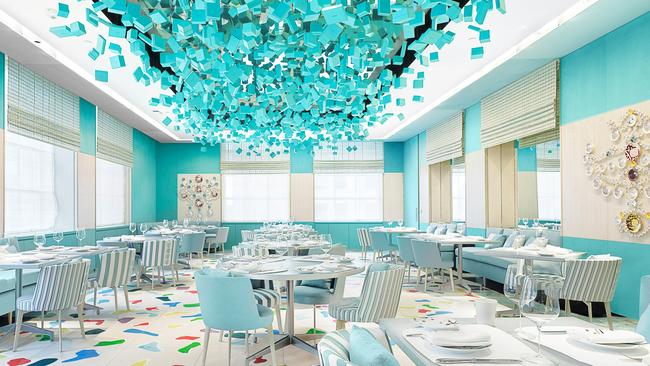
Trend forecaster Chris Sanderson, co-founder of The Future Laboratory in London, tells WISH that luxury has always had its roots in exclusivity and brands are returning to that model after decades of chasing a wider consumer market with entry-level products across fashion, watches and jewellery. “I think we have reached the point of market saturation and this idea of the democratisation of luxury is on the decline,” Sanderson explains. “So now the core luxury brands are understanding that their future lies in really focusing on products for a much smaller and much wealthier group of clientele. And so we are going to cater for that group and open special salons, special products, special clubs and additional personal services via phones or messaging apps.”

Sanderson says they have named this trend “guilded luxury” – referencing the concept of a guild, an exclusive club, a limited membership – to describe what is happening in the sector. The luxury houses foster a sense of community with their top clients to encourage loyalty to their brands and products.
“In a way, luxury brands are turning into members clubs with tiered levels of access offering different benefits and services, whether it is private boutiques for highest spenders or NFTs for the digitally driven that deliver early access to new or bespoke products,” Sanderson adds over Zoom from his London office. “For VIP clients, the luxury brand is transforming into a travel agent, hotelier and cultural compass, always providing a five-star concierge service.”
Wheeler from IBISWorld and D’Arpizo from Bain agree. Wheeler says direct communication with top-spending clients is key and allows staff to invite them to events that will get them into boutiques. “VIC [Very Important Clients] are hungry for new products and money-can’t-buy experiences, putting brand strategy around this into overdrive,” adds D’Arpizo. In order to win these clients, luxury brands need to come up with dedicated product offers – personalised, exclusive and highly creative – through unique and dedicated touchpoints that go beyond pure retail.”
This has also made it to the digital space with e-retailer Net-A-Porter’s EIP (Extremely Important People) program increasing its offerings. “We offer a calendar of intimate events with some of the biggest names in fashion, beauty, fine jewellery and watches through to one-to-one meetings with designers,” says Natalie Lee, Yoox Net-A-Porter’s general manager of Asia Pacific. “Through these, we deepen our relationship with our EIPs to better serve and inspire them.”
These experiences, especially the digital-based ones, are also a way of reaching the younger luxury consumer. And the luxury consumer is indeed getting younger. According to Bain, Millennials have taken over as the biggest spending luxury cohort since the pandemic and Gen Z is hot on their heels. “Millennials and Generation Z accounted for most of the market’s growth in 2022,” D’Arpizo and her team found. “The spending of Generation Z and even the younger Generation Alpha is set to grow three times faster than other generations through to 2030, making up a third of the market.”
-
“It’s estimated that within the next five years the luxury consumer under age 25 is going to be the core market for any business. So luxury is going to have to evolve even faster”
-
This is also coinciding with what has been dubbed “the great wealth transfer” by demographers, which will occur in the next decades and see Baby Boomers – significant wealth generators – pass on their money to their children and grandchildren.
“We are going to suddenly see this ageing down of wealth,” says Sanderson of the upcoming shift. “It’s estimated that within the next five years, the luxury consumer under the age of 25 is going to be the core market for any business. So luxury is going to have to evolve even faster. It is going to become even more exclusive and learn to talk to consumers in a way that understands their sense of luxury which may be more meaningful and purposeful.”
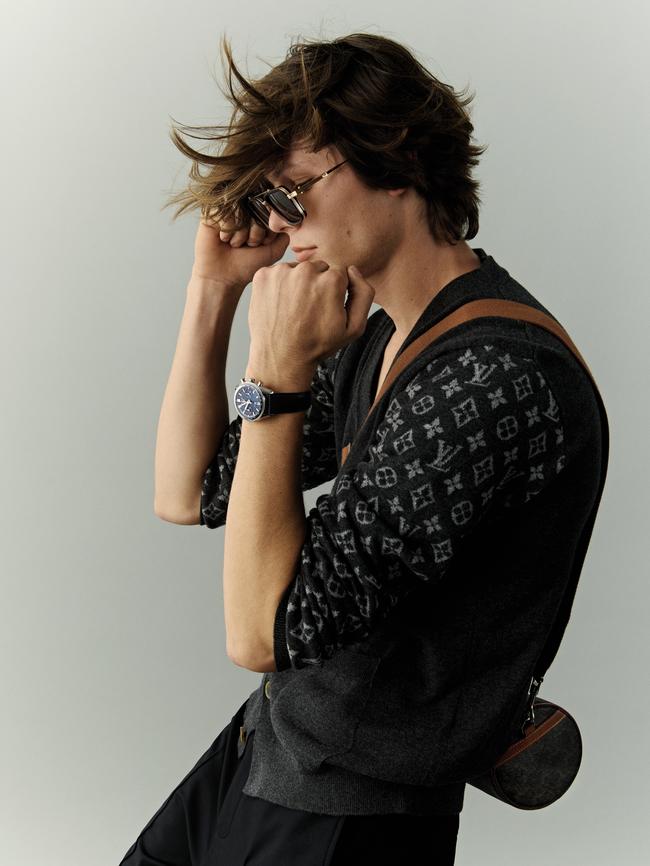
The industry is already grappling with that sense of meaning and purpose with the rise of the conscious consumer and the second-hand goods market. According to Bain, it grew 28 per cent to €43 billion in 2022. After years of new digital platforms popping up (such as Vestiaire Collective and ReSee), the luxury houses themselves are finally joining the party and creating ways to be involved in the resale market. One of the biggest drivers of the sales of second-hand goods is the increased demand for high-end watches, which account for 60 to 70 per cent of the second-hand market.
“Take Rolex for example, where the vintage market is probably as important as the new market,” Sanderson explains. “And many of us find that we can’t actually buy the new Rolex we want new because the brand can’t make enough of their own product to sustain demand. So I think what we will see happen in the future is luxury brands start to control and manage their own secondary market themselves.”
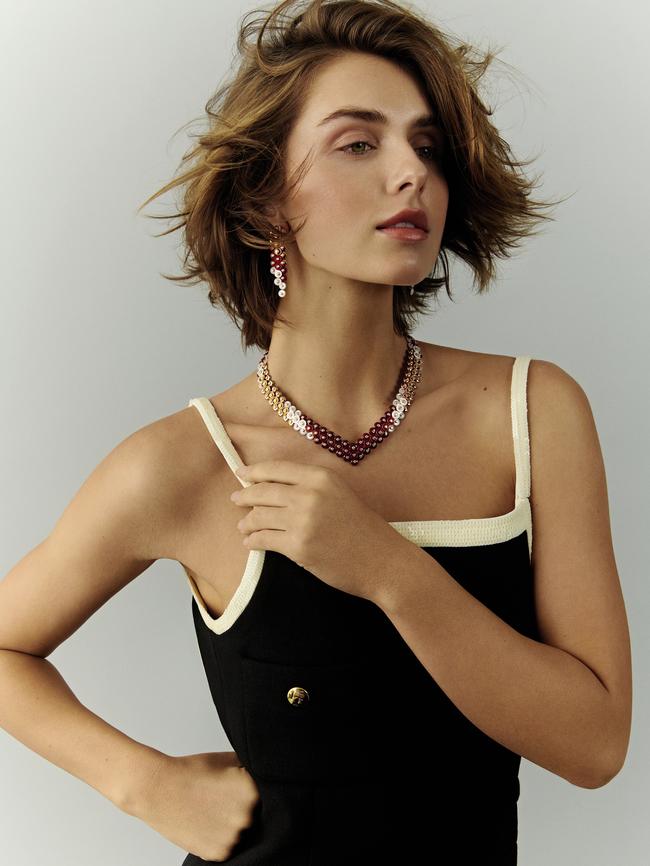
Watches and high jewellery were one of the biggest hits of the past few years, with the world’s wealthiest and younger consumers seeking out the safety of investing in a piece such as a Rolex (unlike shares or real estate), which they can wear or resell given demand. Fashion houses such as Chanel, Louis Vuitton and Gucci have increasingly entered the game, joining traditional brands Cartier, Van Cleef & Arpels and Bulgari in releasing high jewellery collections and throwing elaborate parties at stunning locations.
These events are often attended by clients who purchase the million-dollar jewellery creations and also wear previous collections to the black-tie events.In Australia, watches and jewellery now account for 25 per cent of luxury purchases.
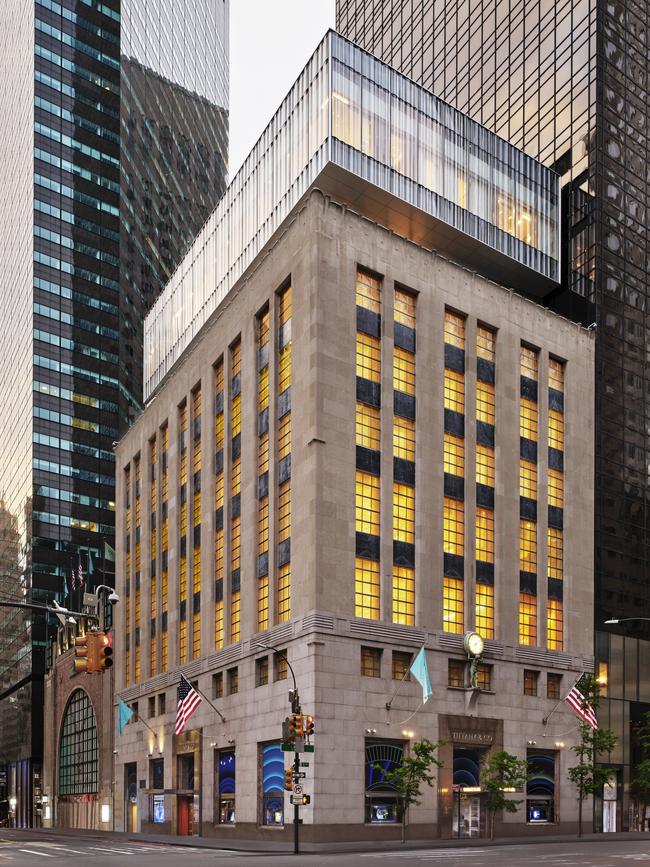
“These items were seen as safe commodities throughout the pandemic,” says Wheeler of the investment. “And demand for these products has grown as consumers have increasingly added high-quality luxury watches and jewellery to their wardrobes. Social media has also driven this trend as influencers and celebrities have more and more showcased their luxury jewellery online.”
So what does Sanderson make of this booming Australian and global appetite for luxury? “Shopping defines civilised society,” he says. “Our ability to trade, our ability to use money to spend on inessentials is key. It has been since Greek and Roman times. I can use my money to buy time, to buy products and to elevate my life through engagement by buying a painting or going on holiday or whatever it may be. The act of consumption is an act of pleasure.”
This story appears in the July issue of WISH, out on Friday July 7 with The Australian.


To join the conversation, please log in. Don't have an account? Register
Join the conversation, you are commenting as Logout